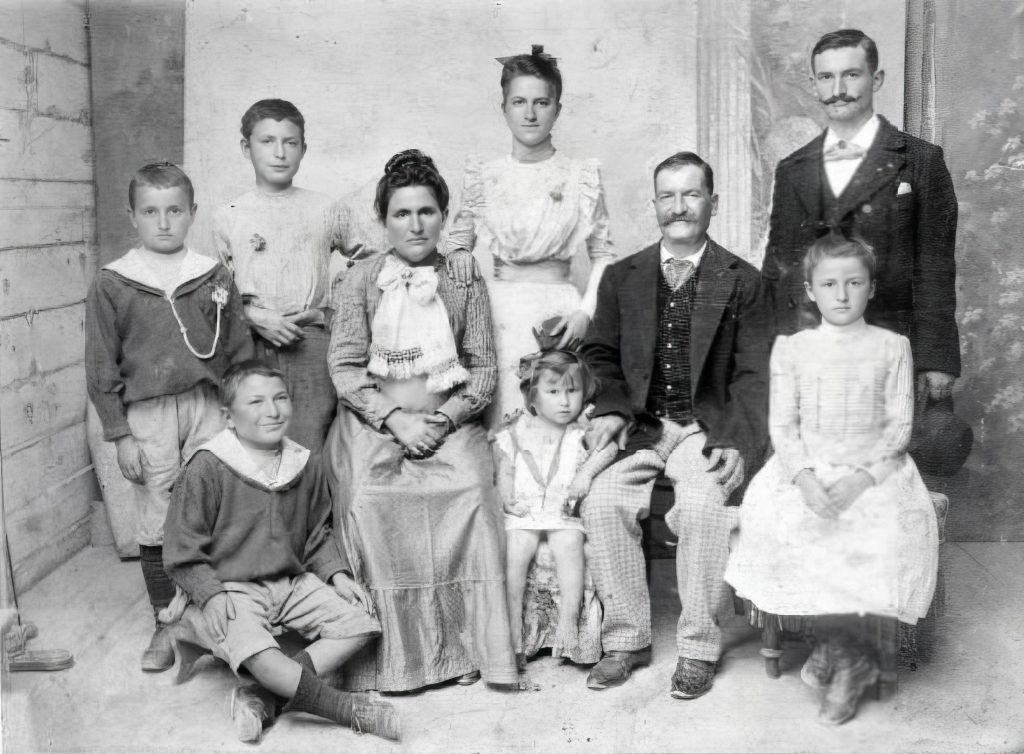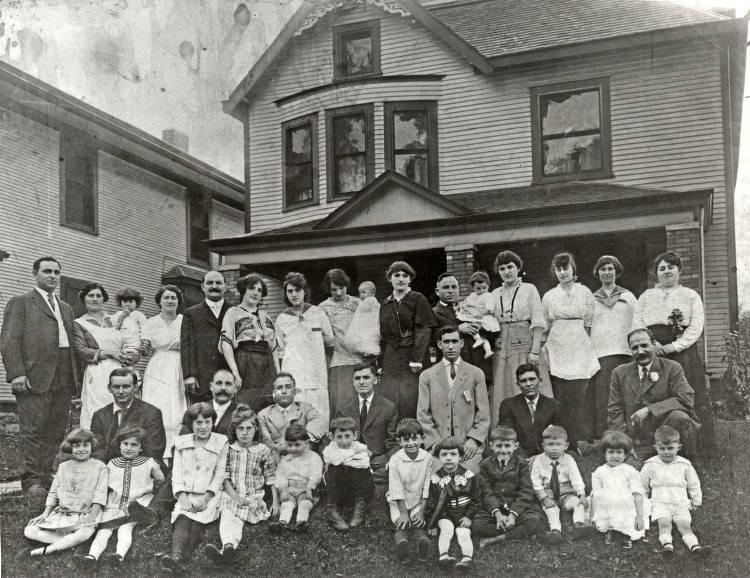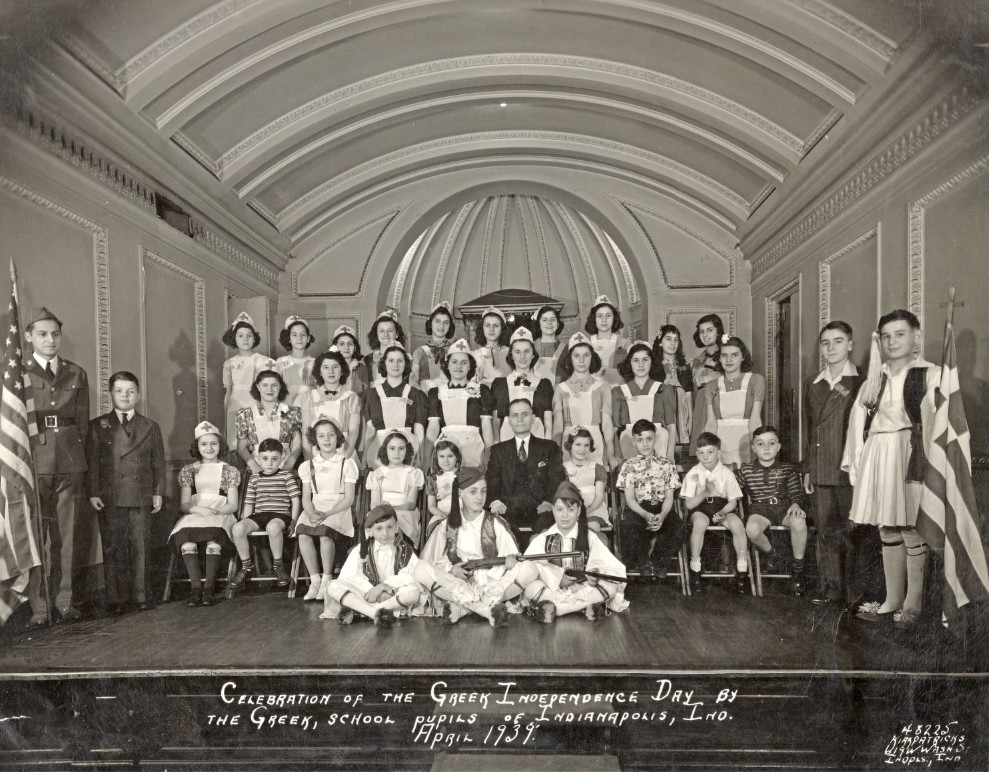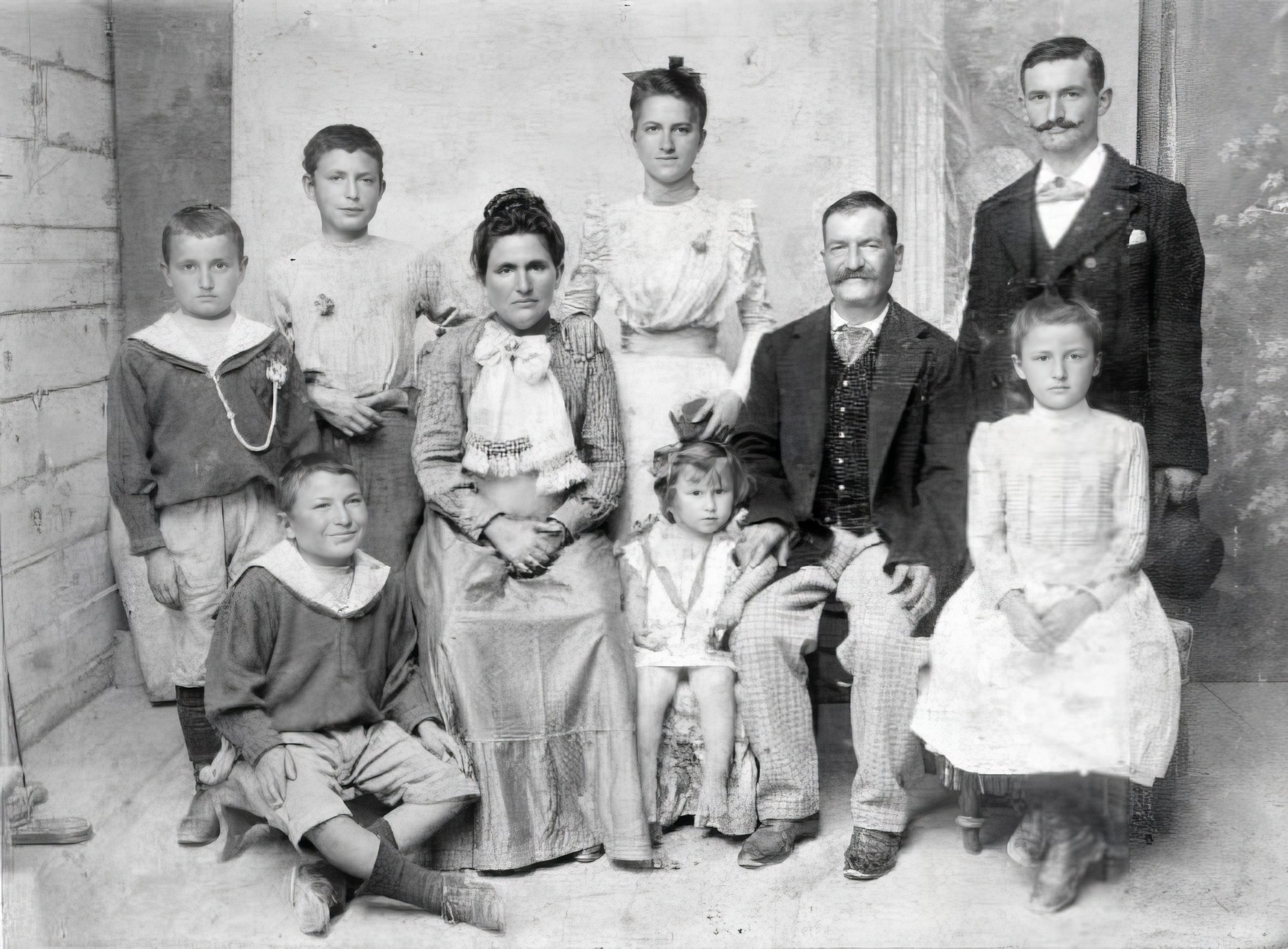The Greek community of Indianapolis was established in the 1890s and early 20th century. The initial immigrants, from the Peloponnesus region, migrated to the city in search of economic advancement. The first Greek immigrants to Indianapolis were young men from labor or agricultural backgrounds with little formal education.

Many Europeans viewed the United States as a land of opportunity where the streets were “paved with gold.” Letters home from earlier immigrants and advertisements by ship lines helped maintain that perception and the continuous flow of immigrants. Many Greek individuals who emigrated intended to return home after making their fortunes here. However, as they established families, opened successful businesses, and witnessed the disruption in Europe following World War I, many decided to remain. The Greek community of Indianapolis developed in this manner.
According to the 1900 census, 82 Greeks resided in Indiana; 29 lived in Indianapolis. Despite the small size of the community, the Greek residents formed a council to establish an Orthodox church. In 1905, the parish was re-established, and, in 1910, it was incorporated under state law, adopting the name of . In the United States, Greek Orthodoxy and Hellenism, a devotion to Greek culture and nationalism, became synonymous. The establishment of a church and community provided Greek immigrants in Indianapolis with a source of religious and cultural continuity and comradeship in their new environment.

Initially, Greek immigrants earned their livelihoods as common laborers or peddlers through the labor industry. By 1906, Greek residents of Indianapolis had established numerous businesses since entrepreneurship was viewed as the quickest route to financial success. Most Greek-owned enterprises, usually sole proprietorships or partnerships, were located along the major streets of downtown Indianapolis. Greek citizens operated service-oriented businesses such as shoeshine stands, confectioneries, restaurants, florists, bakeries, groceries, theaters, billiard parlors, tailoring shops, dry cleaning shops, hardware stores, an employment agency, and taverns.
The early pioneer Greek immigrants usually lived communally near their places of employment. As they established families, they settled next to other members of the Greek community in Indianapolis. By the 1920s, they inhabited three areas of the city: the Balkan neighborhood around , the near east side, and the emerging northside neighborhoods. One wealthy Greek restaurateur and businessman, John G. Zazas, built a mansion at 4356 North Meridian Street. These old neighborhoods began to disintegrate, however, after .
The social and cultural life of the Indianapolis Greek community centered on the home and church. Their main affairs were church picnics and celebrations that brought the growing community together. Over time, they established various Greek social clubs to supplement the community’s social calendar with dances and plays. Greek parents who wanted to preserve their language and culture provided afternoon Greek schools in the church to instruct their children in Greek history, culture, and language.

Early Greek immigrants appeared to have been patriotic to both Greece and the United States. Greek individuals from Indianapolis returned to fight for their homeland in the Balkan Wars (1912-1913). During both World Wars, local Greek citizens served in the United States Armed Forces and joined in assorted war fund drives. The Indianapolis Greek community also became involved with Greek domestic politics. Civil strife in Greece resulted in a bitter schism in Holy Trinity parish from 1923 to 1940. The schism pitted Royalists against Venizelists in numerous legal battles for control of Holy Trinity. The schism in Indianapolis ended during World War II when local Greek individuals united to aid Greece in its battles with the Axis Powers.
The Greek community remained alive in Indianapolis well into the late 20th century and even the start of the 21st century. The 1990 census reported 1,465 individuals of Greek ancestry in Marion County. By the early 2020s, that number had risen to around 2,500 individuals. From its newest location in Carmel, Indiana, Holy Trinity parish has continued to conduct educational, philanthropic, and religious programs and has sponsored the annual Greek Food Festival, an event begun in 1974, which allows everyone who attends to enjoy the Greek faith and culture and zest for living.

Help improve this entry
Contribute information, offer corrections, suggest images.
You can also recommend new entries related to this topic.
